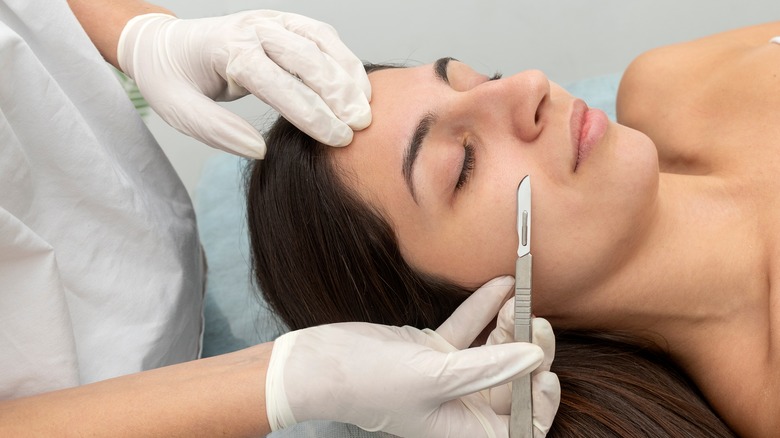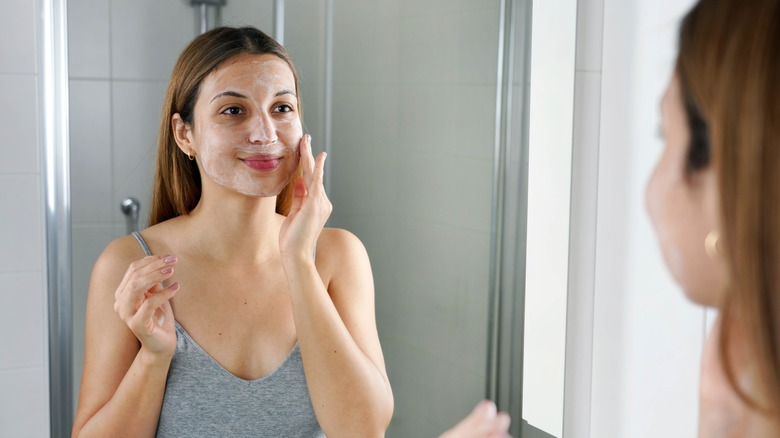Everything You Need To Know About Dermaplaning
Dermaplaning is an exfoliating skincare treatment that involves using a sharp blade to remove dead skin cells and hair from the face (via Self). This type of exfoliation can leave your skin feeling smooth and soft, and can also help to reduce the appearance of fine lines and wrinkles. Dermaplaning is typically performed using a sterile, sharp blade. The skincare professional who does the treatment for you will hold the skin taut with one hand while gently scraping the blade across the surface of the skin with the other. This process is repeated until all of the dead skin cells and hair have been removed.
Dermaplaning offers a number of benefits, including smoother, softer skin, reduced appearance of fine lines and wrinkles, reduced appearance of acne scars, reduced appearance of hyperpigmentation, and better absorption of skincare products. This procedure is generally safe for most skin types, but there are a few potential side effects that you should be aware of, including redness and inflammation, infection, scarring, and hyperpigmentation. You should avoid doing this at home and always consult a qualified skincare professional before undergoing any new treatment. They can help you determine if dermaplaning is right for you and can also provide you with instructions on how to properly care for your skin after the treatment.
Other ways to get smooth skin
While dermaplaning is a popular way to get soft, smooth skin, there are other things you can do if you do not want to try this treatment. Try using a gentle scrub on your face to remove dead skin cells and make your skin feel smooth. Chemical exfoliants that contain ingredients like alpha hydroxy acid or beta hydroxy acid can also help you achieve smooth, bump-free skin (via Byrdie). Using a good moisturizer that contains hyaluronic acid after you wash your face can also help.
Wearing sunscreen every day is one of the best ways to get great skin. It will help to protect you from the sun's harmful rays and prevent wrinkles, age spots, and other skin problems. Make sure to choose a sunscreen that has an SPF of 30 or higher and is water-resistant. Reapply it every two hours, or more often if you are swimming or sweating. Sleeping with a humidifier in your room can also help to keep your skin hydrated and smooth. There are many potential causes of dry or textured skin, so visit a dermatologist if you have skin concerns that you cannot resolve. They can help you figure out what is causing your skin problems and develop a treatment plan to get your skin looking its best.


